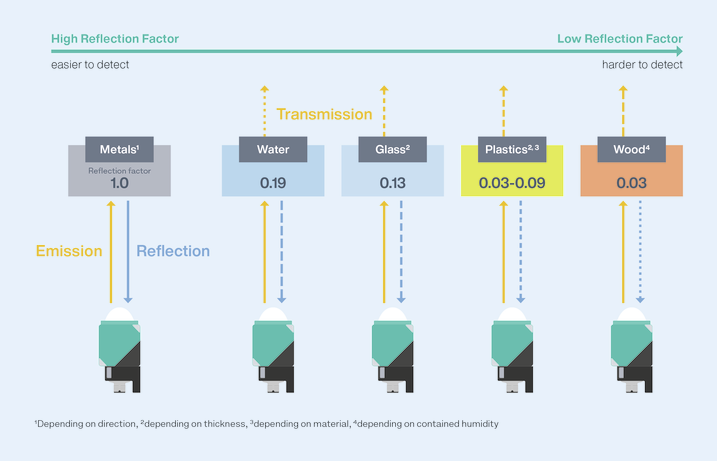Material Properties

Radar waves propagate freely in a vacuum. When the waves hit an object, the signal changes due to the influence of the object's properties. Depending on the materials, the radar waves are completely or partially absorbed or reflected. There is also a penetration of various substances. Absorbing materials are generally poorer radar targets. They also generate a certain amount of reflection at the boundary layers due to the so-called matter jump. However, the vast majority of the radar wave is usually absorbed, which makes reliable measurements on these targets more difficult.
Material |
Absorption |
Reflection |
Transmission |
|---|---|---|---|
|
Metal |
None |
Total reflection at straight incidence, |
None |
|
Wood |
Medium to high |
Low |
Low |
|
Water |
Very high |
Depending on the angle of incidence, |
Low |
|
Foams |
Low |
Low |
Very low |
|
Plastics |
Low to high |
Low to high |
Low to high |
|
Glass |
Low to high |
Low to high |
Low to high |
|
Clothing |
Medium to high |
Low |
Low |
|
Rain |
Low |
Low |
Very high |
|
People |
Medium |
Medium |
Low |
|
Ice |
Very high |
Depending on the angle of incidence, |
None, due to absorption |









 +49 621 776-0
+49 621 776-0